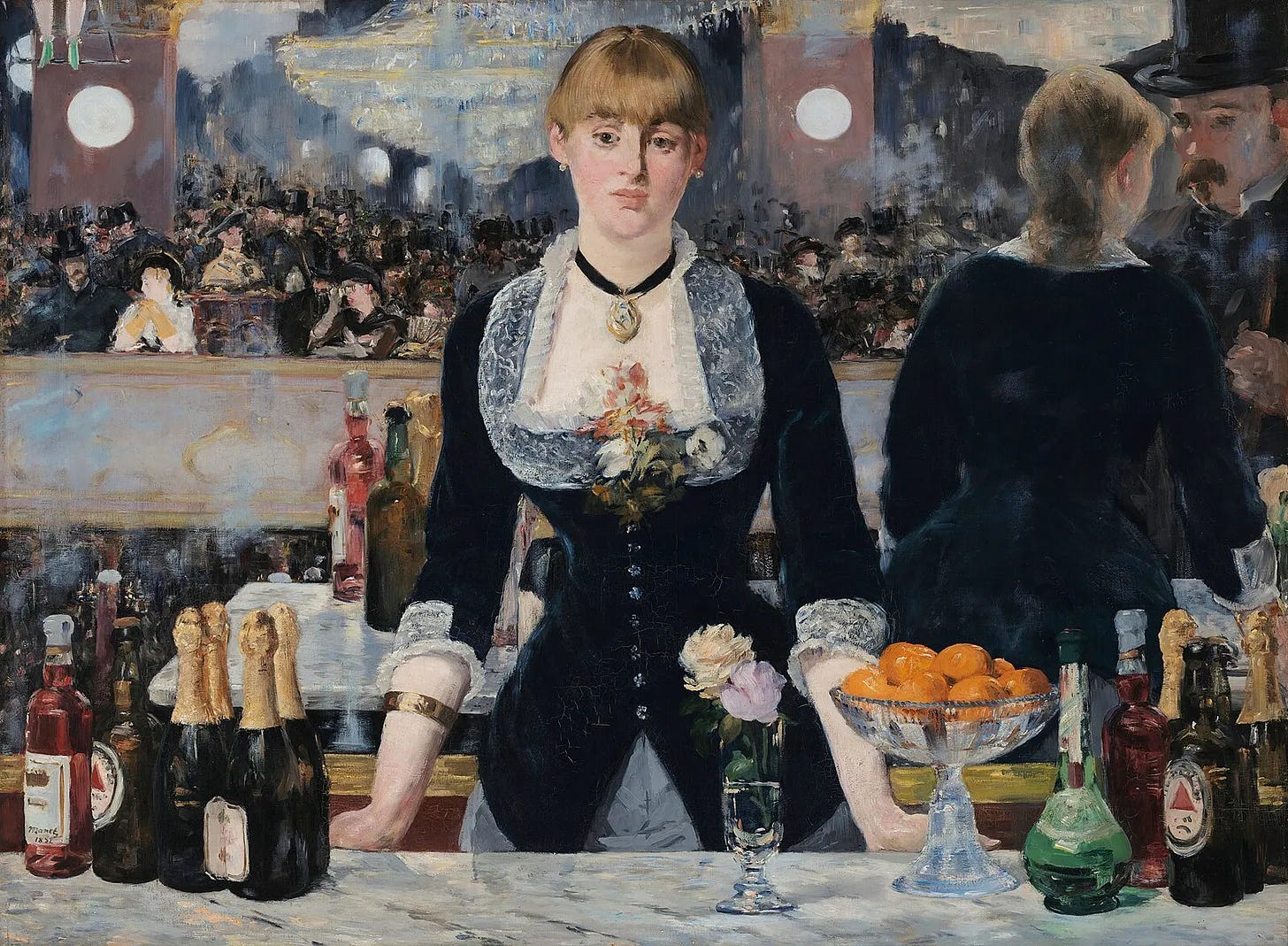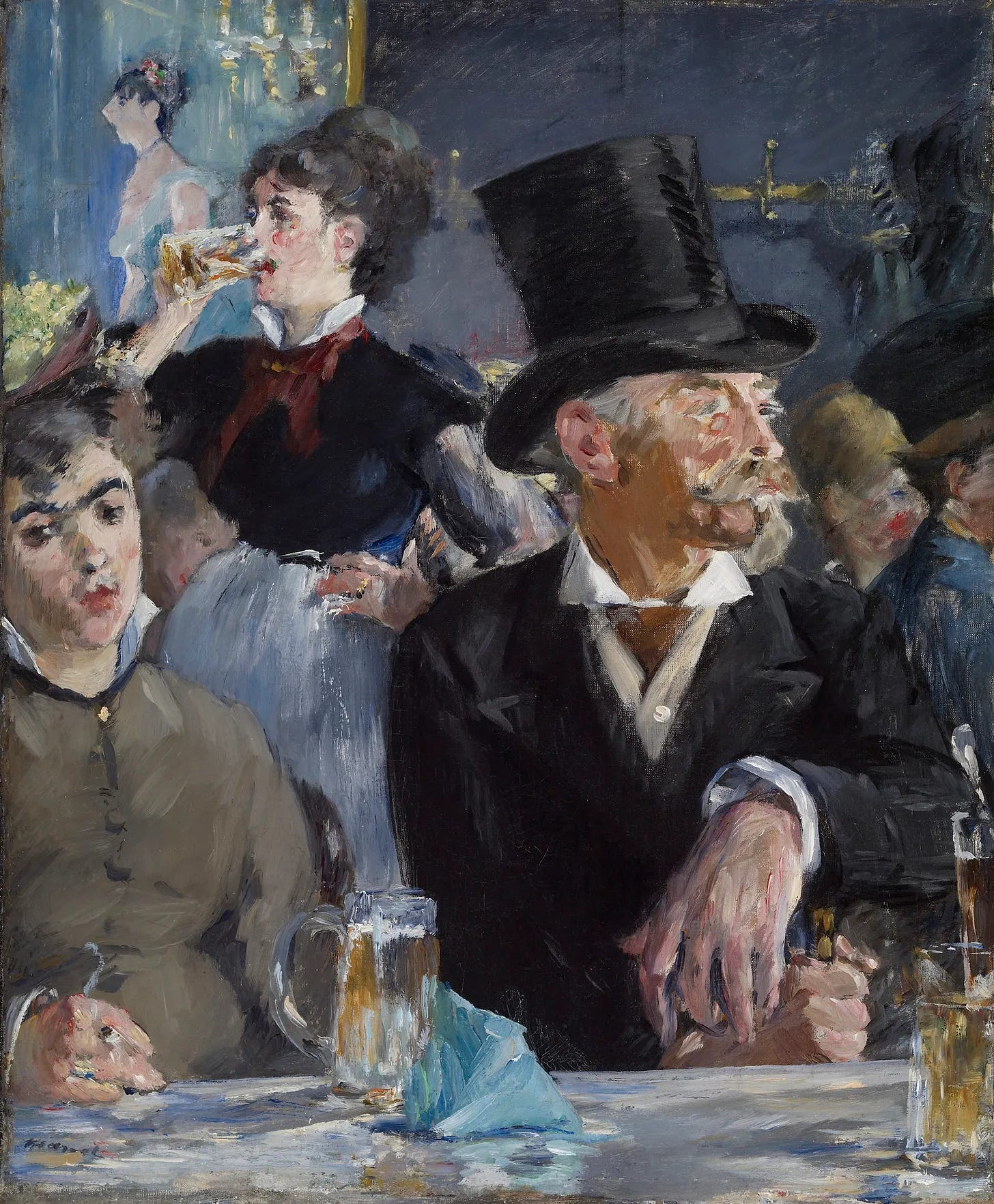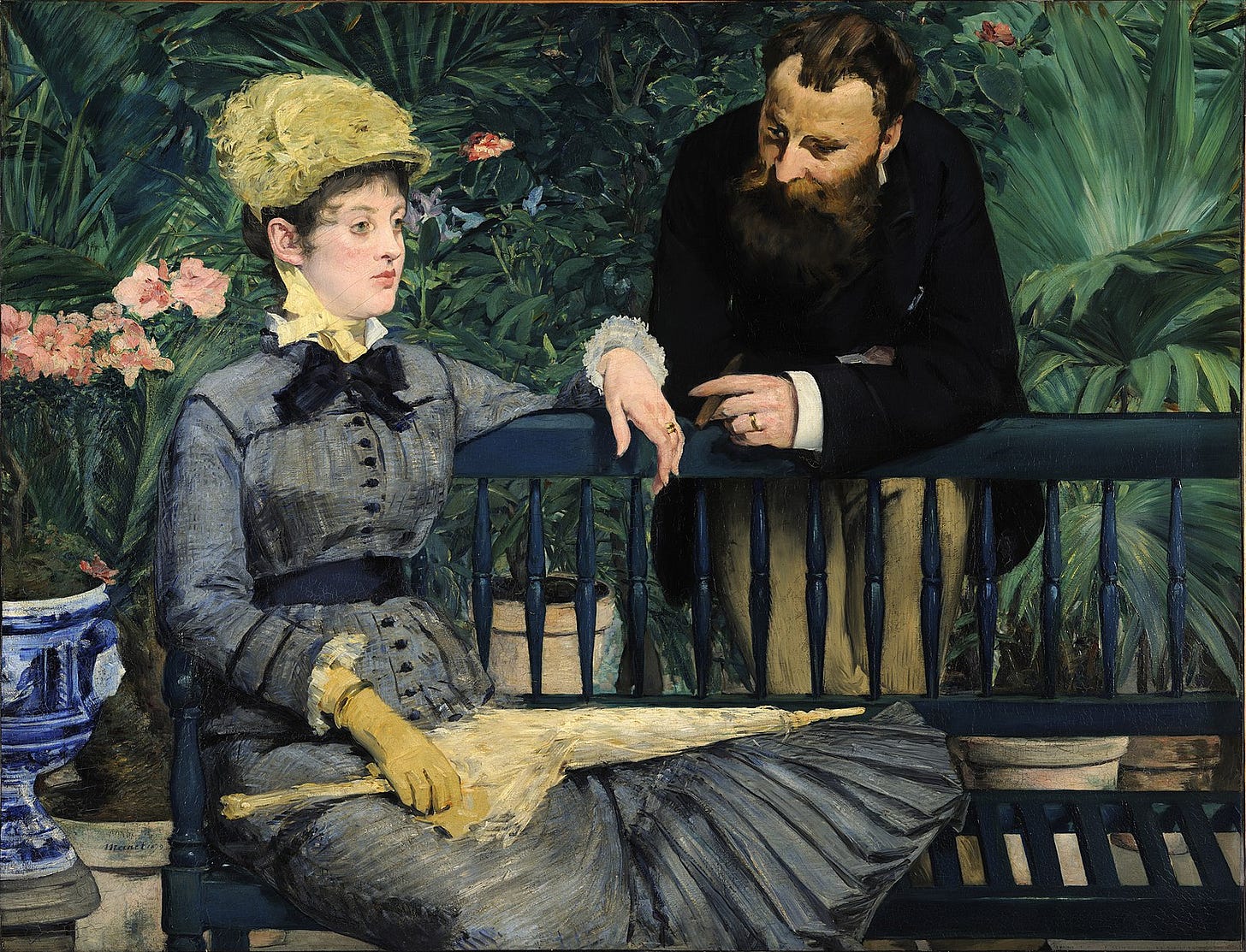Last Call at the Café: Manet's Final Years
In the last installment of our series, we examine Édouard Manet's work at the end of his life.
This essay is part of the series The Life of Édouard Manet. To read other essays in this series and gain access to the full archive, become a paid subscriber today:

The Folies Bergère opened its doors on May 2nd, 1869. It was a concert hall, the kind that played popular music and light-hearted operettas, and featured the fantasy of scantily-clad dancers in an otherwise buttoned-up age. It was where, in 1926, Josephine Baker would dance in little more than costume jewelry and a circle of rubber bananas around her underwear.
Decades before that infamous performance, a bar in the Folies Bergère was immortalized by Édouard Manet. He wandered in one autumn evening in 1881 and quickly noticed the effect that a barmaid seemed to have on her clientele. She was a young, blonde woman; despite her “common” occupation, she possessed a regal air. She regarded her customers with an aloofness that seemed to only further draw them in. But Manet was well known for his charm, and he struck up a conversation with the barmaid. Her name was Suzon.
Suddenly, he had a brilliant idea.
He knew that it would be an ambitious painting—an apotheosis of Parisian life, an ode to the bars and café scenes that he loved so deeply. Since the First Impressionist Exhibition in 1874, his style had only grown to resemble the movement that he refused to formally join, though his work always possessed its own flair.

There was one issue. Suzon would need to come to his studio. The environment at the bar was too chaotic… and there was the inconvenient reality of Manet’s declining health.
The trouble began several years ago.
After enjoying a period of consistent placement at the Salon, his painting Le Linge (1875) was rejected for the 1876 exhibition. He decided to host a private showcase at his studio for all of his rejected works over the years, and to his joyful surprise, critics responded favorably.
While the Impressionists plowed forward with their own exhibitions over the subsequent years, Manet continued putting on solo shows in his studio. In 1877, a beautiful woman arrived to one of these shows, and she paused in front of Le Linge. “But that’s really good!” she exclaimed, perplexed that the Salon had rejected it.1 Manet rushed to make her acquaintance.
The woman was none other than Méry Laurent (a stage name—her real name was Anne Rose Suzanne Louviot). Laurent was the mistress of the very rich American dental surgeon, Dr. Thomas W. Evans, whose clients included some of the wealthiest families in France. Laurent had married a grocer at merely fifteen before running away to join the cabaret. Now, she lived in style, with an allowance from Dr. Evans of 50,000 francs per year.

Manet was mesmerized. Here was a woman who embodied the high-low liminality that fascinated him about Belle Époque Paris. Laurent would, at various points throughout her life, be attached to writers such as Stéphane Mallarmé, François Copée, and Manet’s friend Antonin Proust. Nevertheless, she would not leave Dr. Evans. She explained to Manet, “To leave him would be the wickedest thing to do. I content myself with deceiving him.”2
And so, Manet became one of her lovers. Like many 19th-century bourgeois wives, Suzanne Manet turned a blind eye to her husband’s infidelity. Lord knows, Mother Nature had her own methods of extracting penance.
For late the following year, Manet began to notice something odd.



